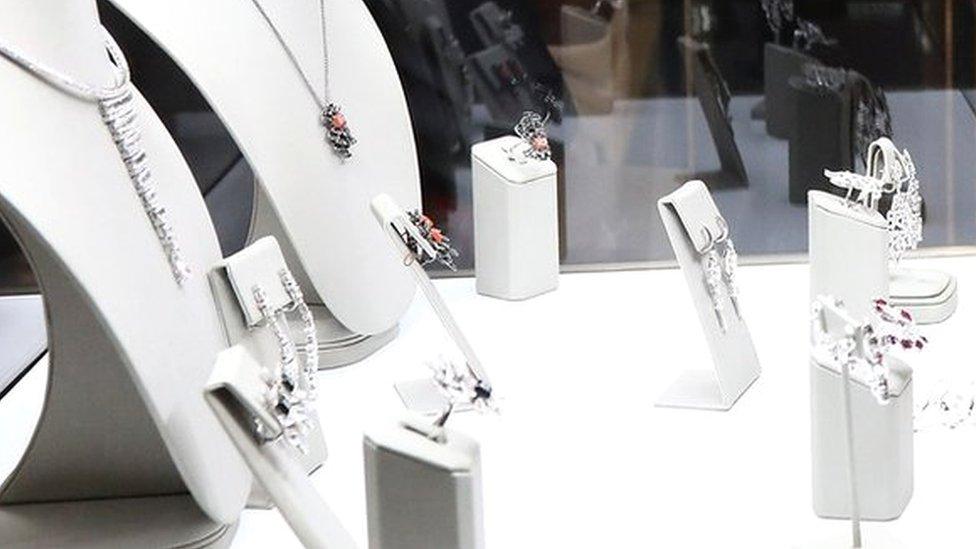Dresden Green Vault robbery: Fears historic jewels may be lost forever
- Published
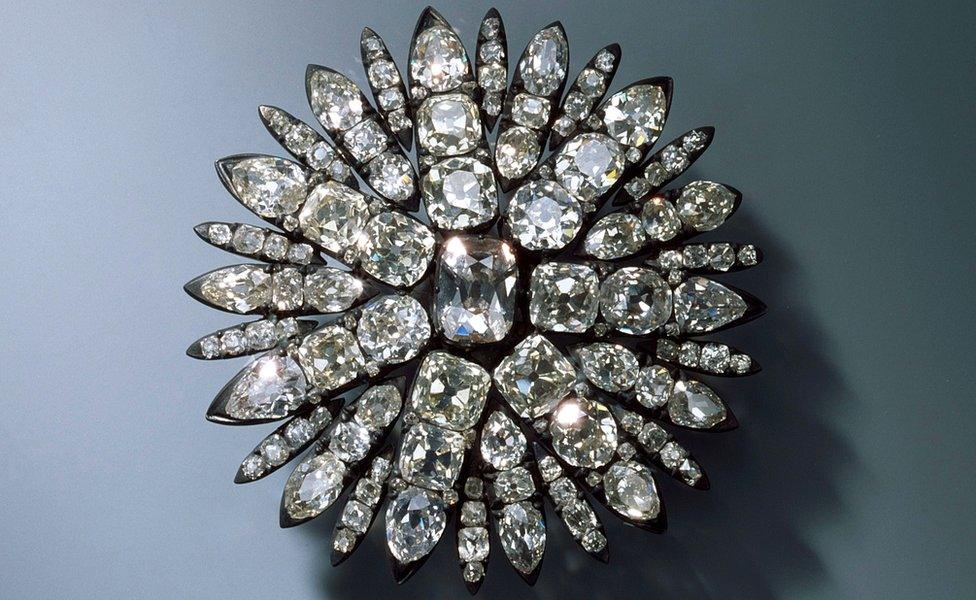
The jewellery was part of a ten-set collection featuring diamonds, sapphires, rubies and emeralds
Diamond-encrusted swords and intricately designed brooches stolen from a former royal palace in Germany may never be seen again, experts warn.
The items, part of a collection created in 1723 by Saxony's ruler, Augustus the Strong, are so recognisable that thieves are likely to break them up.
Artworks taken from the Dresden Green Vault are described as "priceless".
The head of Dresden state museums, Marion Ackermann, said destroying the artworks would be a "terrible idea".
"We are talking here about items of inestimable art-historical and cultural-historical value," she said. "We cannot put an exact value on them because they are priceless."
Police have released a series of photos of the stolen jewels and appealed for witnesses.

A sword encrusted with several large diamonds and dozens of smaller ones was taken
The thieves broke into the vault, known in German as Dresden's Grünes Gewölbe, at dawn on Monday after a fire at the building's power distributor appears to have turned off the alarm system.
An inspection of the museum afterwards revealed that a number of items within the three diamond jewellery sets reported stolen were still in place. Seven other sets that make up the collection were left untouched.
Thieves had managed to gain access to a display case that contained about 100 objects, police said.
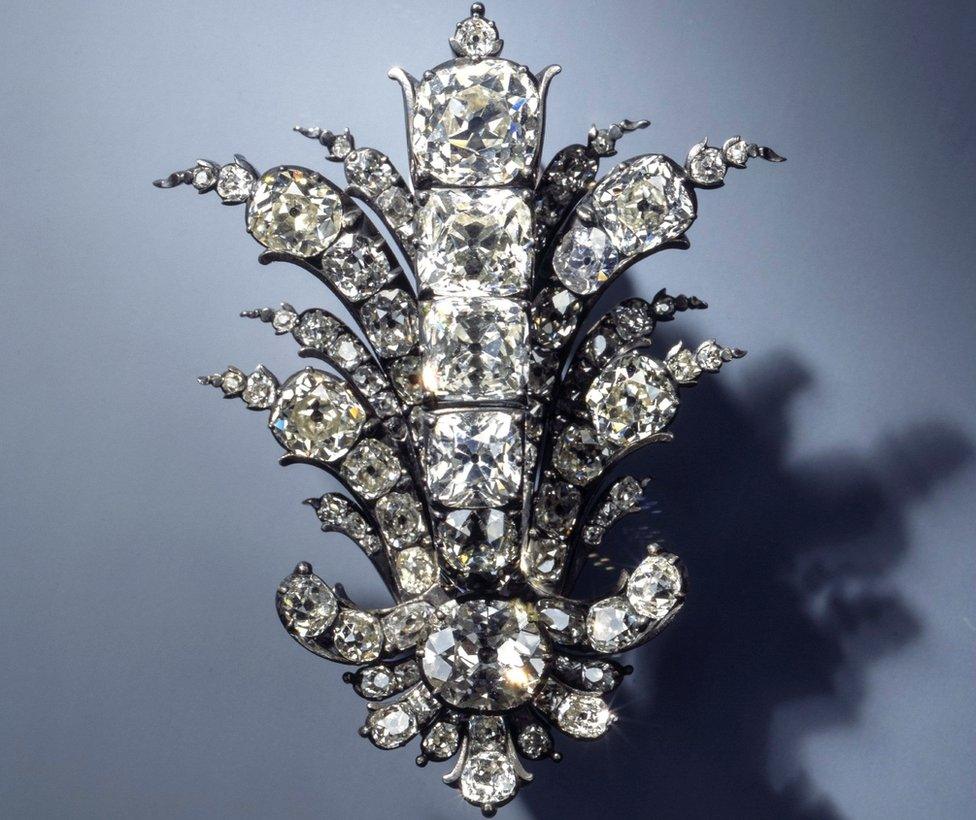
Authorities have not put an official value on the items stolen
Ms Ackermann told reporters she was "shocked by the brutality of the break-in", adding that criminals would have escaped with more jewellery had objects not been so well secured within their cases.
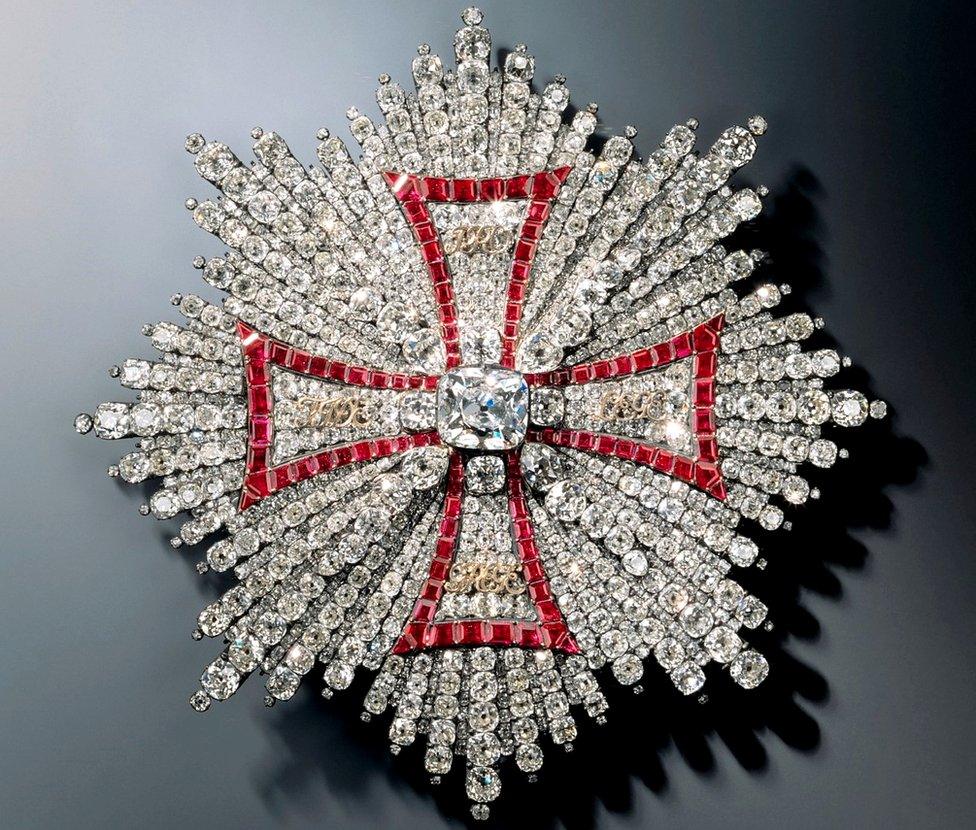
Many of the objects contained diamonds from the 17th Century
Saxony's art minister, Eva Maria, said the stolen items were "to a certain extent the crown jewels of the Saxon kings" and that "they belong to Saxony".

A brooch displaying the Polish Order of the White Eagle was taken
Art Recovery International, which describes itself as "a behind the scenes force" in the world of art, said museums like the Green Vault were "under siege by barbarian criminal gangs who melt down gold and carve out precious stones with no regard to the importance of cultural heritage".
The founder of the company, Christopher Marinello, told the BBC that the robbery in Dresden was "a theft of epic proportions".
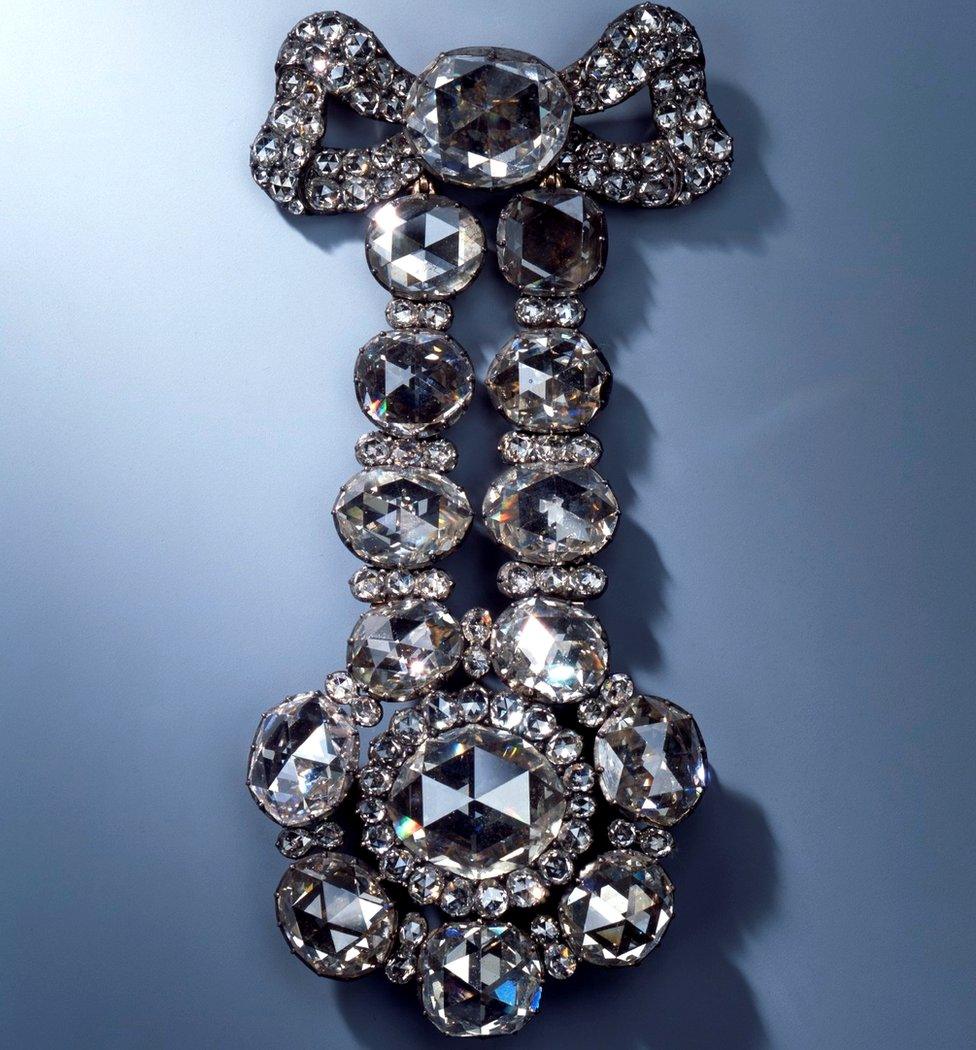
The "Great Breast Loop" that belonged to 19th Century Queen of Saxony Amalie Auguste

Popular German daily Bild said the thieves had grabbed jewels, external worth €1bn (£855m).
"This is a major collection of jewels and intact designs containing gold, diamonds, precious gems and rubies," Mr Marinello said.
"I knew exactly what was going to happen once I heard what was taken - that we were not going to see these items remain intact."
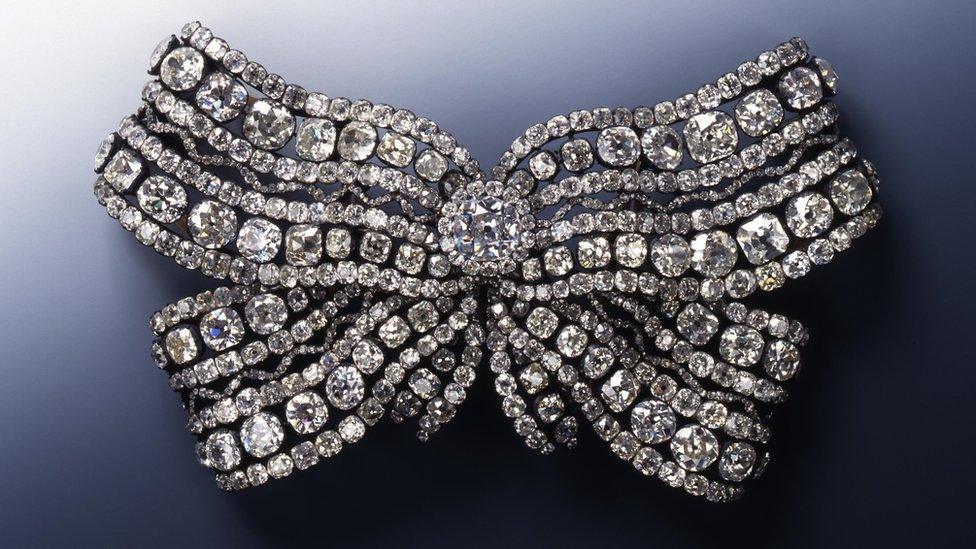
A large diamond-encrusted breast bow
Details of the robbery are still under investigation and the full value of the missing items has not yet been reported.
How did the thieves get in?
The thieves - still on the run - removed part of an iron grille on a ground-floor window, then smashed the glass to gain access to the building.
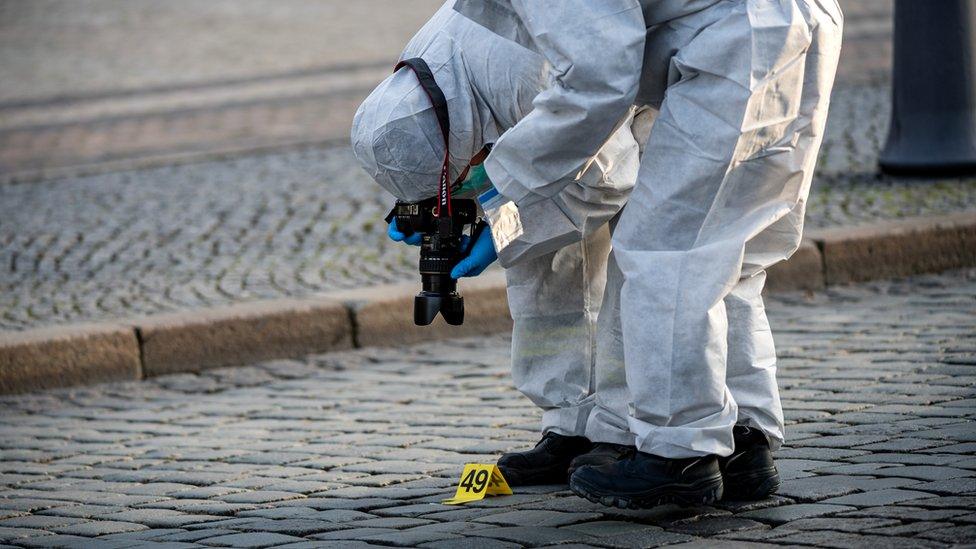
The area outside the Residenzschloss palace, which houses the Green Vault, has been cordoned off
At about 05:00 (04:00 GMT) on Monday, firefighters were called to tackle a blaze in a nearby electricity junction box.
Police believe the fire disabled the museum's alarm system. It put out some of the street lights.
Security camera footage showed figures with torches and tools smashing one of the cabinets
Police are examining CCTV footage which shows two suspects in the dark. But more people may have been involved in the robbery.
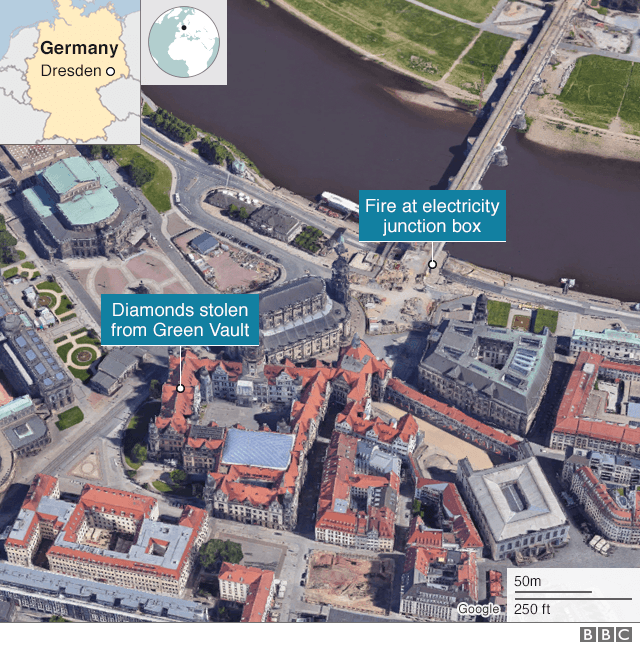

A car found burning in Dresden early on Monday may have been the getaway vehicle used by the burglars, police say.
The museum had guards on duty at night, Ms Ackermann said.
What is the Green Vault?
The collection is housed in eight ornate rooms in the Residenzschloss - a former royal palace.
Three rooms were destroyed by Allied bombing in World War Two, but after the war the museum was restored to its previous glory.
It is called the Green Vault because some rooms were decorated with malachite-green paint.
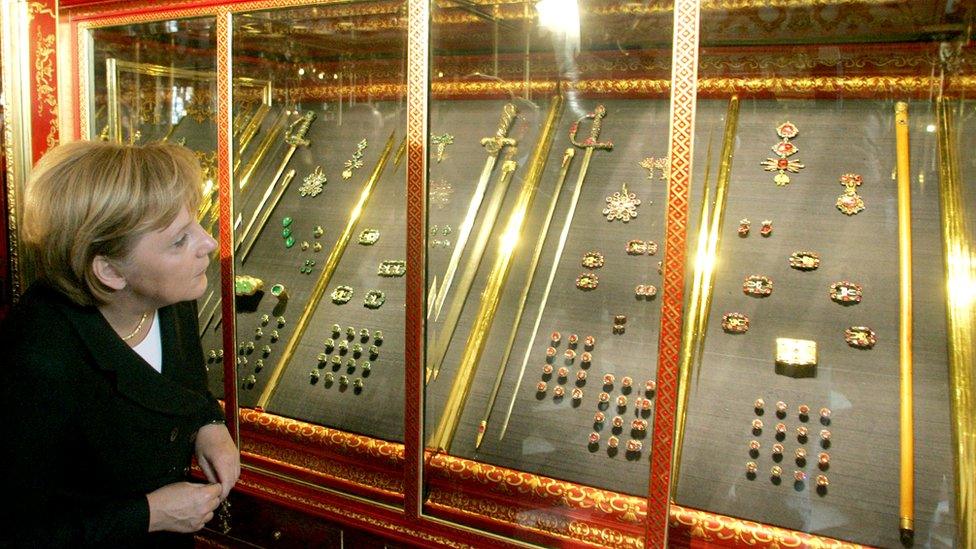
German Chancellor Angela Merkel visits the Gruenes Gewoelbe (Green Vault) museum in 2006
The most valuable items are in the palace's historic section on the ground floor.
There are about 3,000 items of jewellery and other treasures decorated with gold, silver, ivory and pearl. They include a figure of a moor studded with emeralds and a 648-carat sapphire - a royal gift from Russia's Tsar Peter the Great.
One of the most valuable jewels is a 41-carat green diamond currently on show in New York.
The collection was founded by Augustus the Strong. He was Elector of Saxony - a German prince entitled to take part in the election of the emperor - and later king of Poland.
- Published26 November 2019

- Published10 January 2019
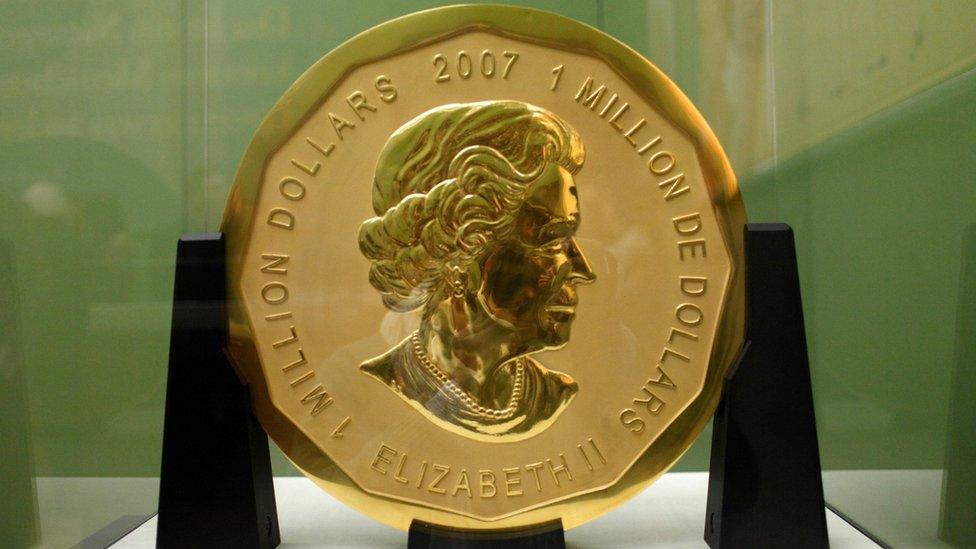
- Published4 April 2019
